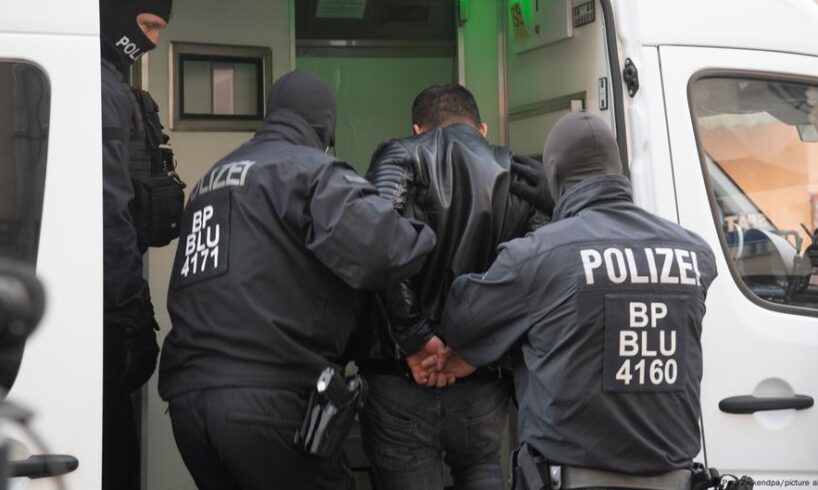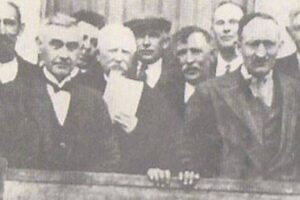
“We are charting something like the fever curve of society,” journalism professor Thomas Hestermann said of his new study, “Crime and Migration: Perception in German Media,” which examined how the nationality and ethnicity of crime suspects has been reported since 2007.
Hestermann’s team at the Macromedia University of Applied Sciences in Hamburg compiled their 2025 findings for the Berlin-based Mediendienst Integration, a research service for journalists that focuses on migration, integration and asylum. The results, published on Friday, are alarming: “Foreign suspects are mentioned about three times more often than their share in police statistics.”
That figure has never been so high, Hestermann says, comparing it to 2014, when the nationality or ethnicity of suspects scarcely played a role in reporting.
How migration to Germany changed after 2015 refugee arrivals
To view this video please enable JavaScript, and consider upgrading to a web browser that supports HTML5 video
A year later, about one million migrants arrived in Germany, around one-third of whom had fled the civil war in Syria, while a fifth came from Albania and Kosovo. Since then, Hestermann has observed a “drastic distortion” in the German media when it comes to crime and migration.
Influencing public opinion
Media coverage has consequences, Hestermann says, because it affects how people form their ideas about violent crime. They ask themselves: “How much danger am I actually in? Who poses a threat?”
Hestermann’s study sought to answer similar questions: “How is the perception of violence changing? How is the view of the suspects and their origins changing?”
He describes different reactions he observed using the example of two attacks that took place in Munich and Mannheim in 2025: “Munich: A young Afghan man allegedly drives into a crowd, killing two people. Shortly afterwards in Mannheim: A German man also drives into a crowd, killing two random victims.”
Playing into the right-wing populist agenda
And what happened in the media? Public broadcaster ARD aired a primetime report on the attack in Munich, but not about the one in Mannheim. Altogether, the study counted twice as many reports on German TV and in newspapers about the crime involving the foreign suspect.
Hestermann is familiar with such journalistic reflexes from his own experiences as a reporter and presenter for both public and private radio and TV stations. Decisions are often made intuitively, based on gut feeling, he says. This, he said, is often unintentional, a conclusion he based on his conversations in editorial offices.
Nevertheless, “many intuitive decisions result in a pattern of reporting that follows a right-wing populist agenda,” he said.
On February 13, a man drove his car into a crowd of people in central Munich. The suspect’s origins led to far more reporting than that devoted to a similar incident in Mannheim Image: Michael Bihlmayer/Bihlmayerfotografie/IMAGO
‘The reporting is discriminatory overall’
Hestermann said that left-wing journalists are often accused of only reporting positively on migration. But that isn’t accurate, he said: “The overall reporting is discriminatory.”
He cited weekly media analyses conducted between January and April 2025 as evidence on the subject of crime. During this period, 168 TV reports on violent crime in Germany involving 146 suspects were examined, as well as 330 newspaper articles involving 263 suspects.
Hestermann found no significant differences, even though the editorial orientation varied greatly, from public and private TV stations to print and online texts.
“We found that two newspapers as completely different as [conservative] Die Welt and [left-leaning] taz exclusively named foreign suspects during the period under review, if origin was an issue at all,” Hestermann said.
Criminologist and sociologist Gina Wollinger calls this media distortion a “migrantization” of crime. The professor at the University of Applied Sciences for Police and Public Administration in North Rhine-Westphalia argued this was caused by what she called an overemphasis on culture. “A category that, in my perception, is only used when the perpetrators are non-German. Suddenly the question arises: ‘Does it have something to do with culture?'”
Editorial diversity as remedy
Wollinger stressed that crime has nothing to do with origin. “It’s not migration history. It’s not the passport or nationality,” she said. “Rather, it’s certain risk factors that stem primarily from poverty, lack of prospects, and personal experiences of violence.” When these factors are taken into account, one sees no difference between people with or without a migration background, she added.
How might this imbalance in reporting be corrected? Hestermann said that in his experience as a journalist, language barriers can often be an obstacle when reporting on migration.
“That’s why it’s important for editorial offices to become more diverse,” he said. “For young people who have grown up in different cultures to enrich the editorial offices.”
This article was originally written in German.





